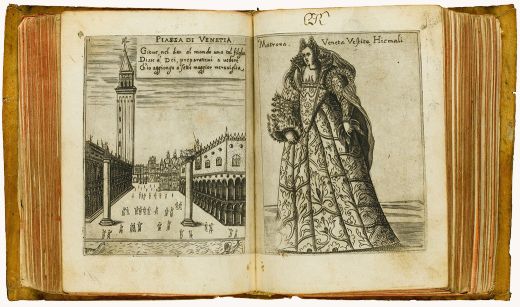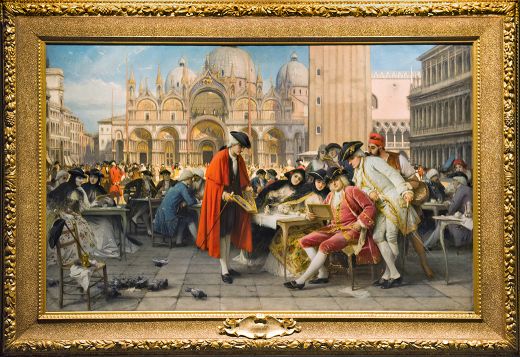

Venice had always been a city where art was taken very seriously.
Venetians are, they have always been, known for having a strong predisposition for "what looks nice", be it clothes, housing, and art, of course.
The city nobility became quite rich with the conquest of Constantinople in 1204 and the creation of a colonial empire in the XIII century.
And it got better thanks to the monopoly they set up in the XV century on spice trading from India, passing through the Arab countries, using exclusive trade agreements.
These events created a strong and diffused class of rich merchants who liked "to appear, to show off".
And Carnival itself was a game of showing off their richness, their crazy and ironic vein, as this is part of the Venetian way of being too.
Renaissance was going strong all around Italy, and the possibility of creating books with text and images that could be diffused - not in unique or very limited number copies - gave an impulse to create.
And in Venice there was the habit of decorating the front of the houses with painted frescoes.
But air humidity, salt, rain, wind and obviously the merciless weather of a city in the middle of the sea, have inexorably erased the efforts of famous (and less famous) painters.
In the XVI century Venice was called the "la città dipinta" (the painted city) because of its painted exteriors: every artesan or shop would care quite a bit about its appearance, so the building was kept in good shape and made attractive. Venetians have always been very competitive ...
At the same time oil paintings to adorn the rich Venetian houses, became a must.
And a storm of skilled artisans became the painter we know being "of the Venetian School", with the difference that, although Venetians were - and still are - very religious, the subjects were a little less Madonnas oriented, because the clients weren't necessarily the Church, like in Rome or Florence, but were mainly the rich merchants, or outsiders.
And so these nobles would care to put in their lounge ... a landscape of the city of which were proud inhabitants (Canaletto) or who knows, a scene of that crazy Carnival, or the Ridotto where they went at night to bet some extra money (Longhi, Guardi) or an ironic image of a Charlatan (Tiepolo).

